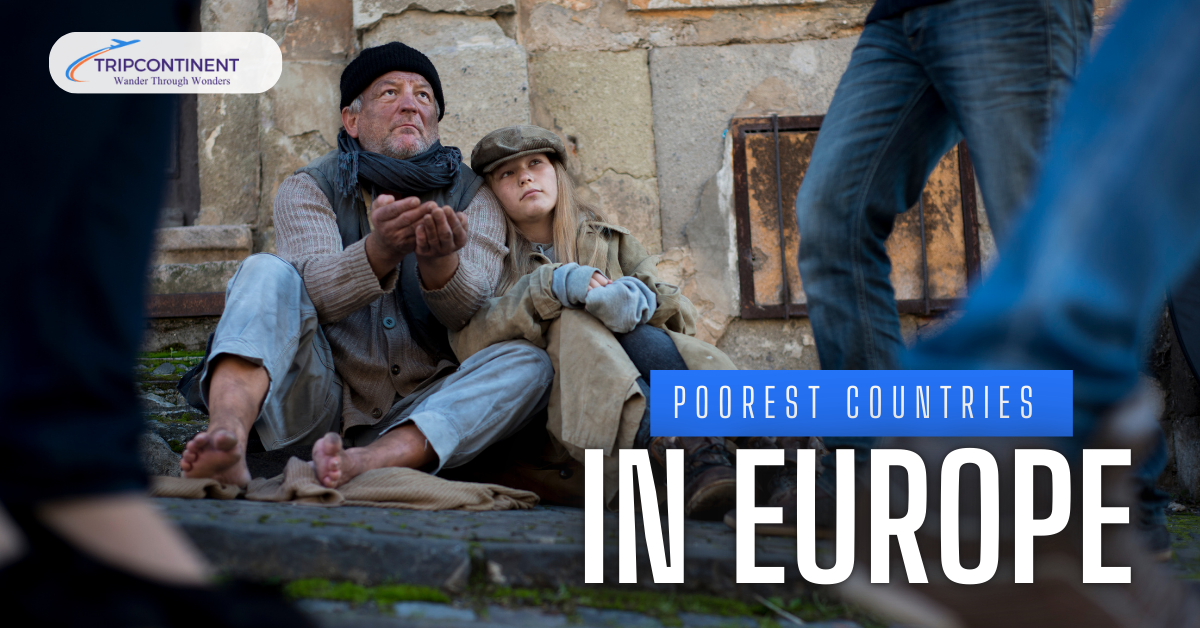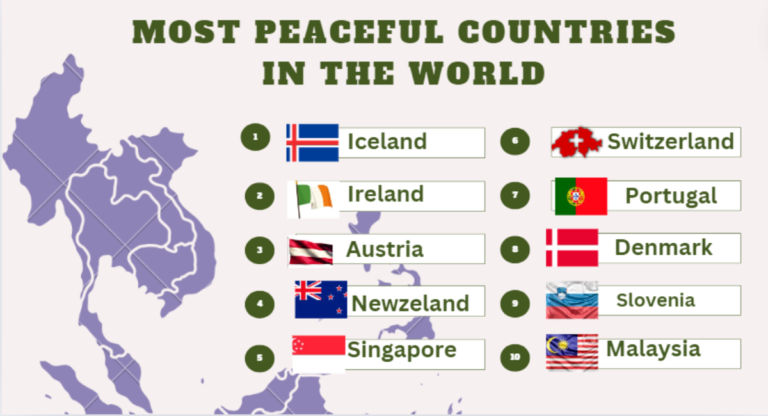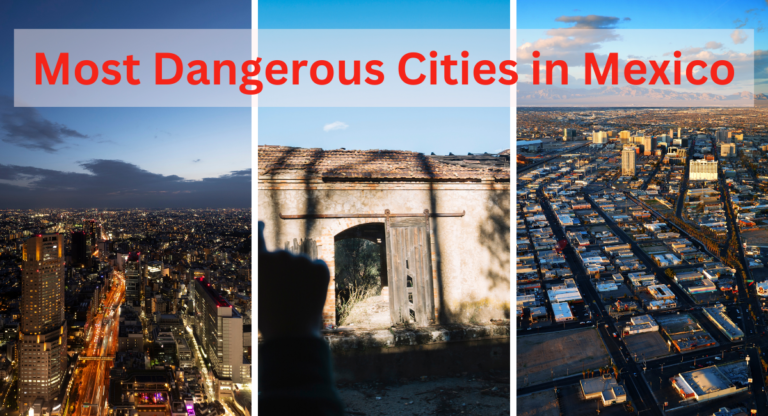A Detailed Look at the Poorest Countries in Europe in 2024
Europe is a continent of opposites, despite being perceived as a stronghold of prosperity and growth. Amidst its prosperous nations, countries are grappling with economic challenges. The ongoing war between Russia and Ukraine has further complicated the economic landscape, affecting trade and stability across the region.
We will look at the GDP, economic growth, and global rankings of the poorest countries in Europe in this article. By understanding these nations’ struggles and potential, we can gain a broader perspective on the economic disparities within Europe and the factors contributing to their current state.
From analyzing the historical contexts to exploring the present-day challenges, this exploration aims to shed light on the complexities and nuances of Europe’s less wealthy regions. Let’s uncover the realities behind the headlines and understand the economic narratives of these nations.
A List of Europe’s Ten Poorest Nations for 2024
Below is a list of the ten poorest countries in Europe in 2024 as per the Human Development Index (HDI) rankings. Each of them will be covered in more detail below.
- Ukraine
- Moldova
- North Macedonia
- Albania
- Belarus
- Bosnia and Herzegovina
- Serbia
- Montenegro
- Russia
- Bulgaria
1. Ukraine
Ukraine, currently the poorest country in Europe in 2024, faces severe economic challenges. With a GDP per capita of just $5,663, it lags significantly behind the European average. The ongoing conflict in eastern Ukraine has severely disrupted economic activities and deterred investment, further hampering growth. Unemployment remains high, hovering around 10%, exacerbated by the uneven distribution of wealth and resources that disproportionately benefit a small elite.
The country’s economic growth has been stagnant, with a GDP growth rate of approximately 2% in 2024. This sluggish pace has hindered Ukraine’s ability to close the economic gap with its European neighbors and elevate the living standards of its citizens.
Additionally, Ukraine’s Human Development Index (HDI) ranking, a measure of overall national development, stands at around 100th out of 193 countries, indicating significant struggles in education, healthcare, and quality of life. These factors collectively contribute to the nation’s economic hardships and underscore the pressing need for comprehensive reforms and stability.
Also Read: Safest Cities in Europe
2. Moldova
As of 2024, Moldova ranks as the second poorest country in Europe, with a GDP per capita of approximately $7,488. This economic status is influenced by the country’s heavy reliance on agriculture and remittances from Moldovans working abroad, both of which have suffered due to the spillover effects of the war in Ukraine. The conflict has disrupted trade routes and economic stability, further straining Moldova’s economy.
Unemployment remains a persistent issue, at around 7%. Income inequality exacerbates the situation, as wealth distribution is uneven, leaving many citizens in precarious financial situations. The country’s GDP growth rate is modest, at an estimated 2.6% in 2024, reflecting sluggish economic progress.
Moldova’s Human Development Index (HDI) for 2024 is 0.767, ranking it 86th out of 193 countries. This index highlights the nation’s challenges in health, education, and living standards, underscoring the need for comprehensive development policies. The country’s economic dependence on a few sectors and external factors contributes to its vulnerability, making sustainable growth and diversification critical for improving living conditions and economic resilience.
3. North Macedonia
In 2024, North Macedonia ranks as the third poorest country in Europe, facing a range of economic and social challenges. The country’s GDP per capita stands at approximately $9,529, reflecting limited economic progress. One of the major issues is the persistently high unemployment rate, which is around 14.5%, indicating significant underemployment and a lack of job opportunities.
Despite efforts to stimulate growth, North Macedonia has only seen modest economic expansion, with a GDP growth rate of 1.6% in late 2023. This slow growth rate has hindered the country’s ability to improve living standards and reduce poverty levels. Furthermore, North Macedonia’s Human Development Index (HDI) score in 2024 is 0.770, placing it 78th out of 189 countries. This ranking represents a slight decline from previous years, highlighting ongoing issues in health, education, and overall quality of life.
The country’s economic and developmental challenges underscore the need for comprehensive reforms and investment in key sectors to foster sustainable growth and improve social outcomes. Addressing these issues is crucial for enhancing the well-being of its citizens and advancing the country’s position in Europe.
4. Albania
Albania, situated in the Balkan Peninsula, continues to face significant economic challenges. As of 2024, the country’s GDP is approximately $59 billion, with a GDP per capita of $8,924. Unemployment has been a persistent problem, averaging 12.90% from March 2012 to September 2023. Although the rate decreased to 10.54% by September 2023, it remains a pressing concern for the Albanian government and economy.
The country’s economic growth has been moderate, averaging an annual growth rate of 2.7% over the last decade. However, projections indicate a slower growth trajectory, with a long-term growth rate forecasted to be around 0.50% in 2025 and 0.40% in 2026. These figures suggest limited economic dynamism and highlight the need for structural reforms.
Albania’s Human Development Index (HDI) ranking has also been declining. In 2020, Albania was ranked 67th out of 189 countries, with a score of 0.796. This decline in HDI reflects challenges in providing quality education and healthcare services. Addressing these issues is essential for improving living standards and ensuring sustainable development in Albania.
5. Belarus
In 2024, Belarus’s GDP is estimated at around $252 billion, with a GDP per capita of $7,557. Despite these figures, various factors challenge the country’s economic stability. The unemployment rate has been notably low, averaging 0.70% from October 2004 to February 2024 and dropping to 0.10% in February 2024. However, this low rate may not fully reflect underemployment or informal employment, which can obscure the true economic situation.
Belarus’s economy has shown moderate growth over the past decade, averaging an annual growth rate of 2.34%. In 2023, the economy expanded by 3.90%, a rebound from a 4.70% contraction in 2022. However, this growth is insufficient to significantly raise living standards or address structural economic issues.
The country’s Human Development Index (HDI) ranking has been on a downward trend, placing 69th out of 193 countries in 2020. This decline highlights the need for Belarus to focus on job creation, reducing income inequality, and boosting economic growth. Addressing these areas is crucial for improving the quality of life and economic prospects for its citizens.
6. Bosnia and Herzegovina
Bosnia and Herzegovina, situated in the Balkans, remains one of Europe’s poorest countries. In 2024, the country’s GDP per capita is projected to be $9,029, reflecting a struggling economy. The unemployment rate is alarmingly high, with 16.9% of the population unable to secure stable employment in the first quarter of 2024. This figure underscores significant challenges in the labor market and the economy’s capacity to provide adequate job opportunities.
Economic growth in Bosnia and Herzegovina has been modest, with an average expansion rate of around 3% in recent years. However, this growth is unstable, influenced by geopolitical tensions, supply chain disruptions, and the lingering effects of the COVID-19 pandemic. These factors have exacerbated the country’s economic volatility and hindered consistent development.
The country’s Human Development Index (HDI) ranking has also declined, placing 74th out of 191 countries in 2021. This decline indicates persistent issues in improving healthcare, education, and overall living conditions. To advance economically and socially, Bosnia and Herzegovina must address high unemployment, ensure sustained economic growth, and enhance the well-being of its population.
Also Explore: Poorest States in America
7. Serbia
Serbia, with a population of approximately 6.664 million, is considered one of the poorer countries in Europe in terms of GDP per capita, yet it is not the poorest. In 2024, Serbia’s GDP per capita stands at $12,388, which, while low compared to many European nations, is higher than that of countries like Ukraine and Moldova. The country’s unemployment rate has improved significantly, reaching a historic low of 8.9% in 2021. This positive trend continues despite an increase in the labor force participation rate to 55%, indicating a strengthening job market.
Serbia’s economy is expected to grow at a baseline rate of 3.5% in 2024, reflecting a moderate pace of economic development. The country’s Human Development Index (HDI) score was 0.805 in 2022, placing it 65th out of 193 countries. This ranking indicates substantial progress in health, education, and living standards.
Continued efforts in these areas, along with economic reforms, are essential for further improving Serbia’s economic standing and citizens’ quality of life.
8. Montenegro
Montenegro, with a population of 617,213, ranks as the 8th poorest country in Europe. In 2024, Montenegro’s GDP per capita is $12,297, and it is projected to rise to $13,087 in 2025. The country has seen significant economic progress, reflected in its low unemployment rate, which hit a historic low of 8.9% in 2021. The World Bank has revised its forecast for Montenegro’s economic growth, expecting a 3.4% expansion in 2024, up from a previous estimate of 3.2%.
Montenegro maintains a strong position in terms of human development, ranked 49th out of 189 countries, placing it among those with very high human development. Advances in healthcare, education, and overall living standards support this ranking. Despite these gains, poverty remains a concern, with a poverty headcount ratio of 21.2% at the national poverty line in 2020.
However, projections suggest a decline in poverty, with the rate expected to decrease by 1.5 percentage points from 2023 to 7.5% by 2026. Continued economic growth and social development efforts are crucial for reducing poverty and enhancing the quality of life in Montenegro.
9. Russia
As of 2024, Russia’s economy features a moderate GDP per capita, forecasted to reach $10,281 by the end of the year, with further increases to $10,445 in 2025 and $10,592 in 2026. The country has seen a steady decline in poverty levels and has made efforts to reduce unemployment, which is expected to be around 3.14% in 2024. This marks a notable improvement from the 5.01% unemployment rate in 2021. However, regional disparities remain, particularly in areas like the North Caucasian Federal District, where unemployment was nearly 10% in mid-2023.
Russia’s economic growth is projected at 3.2% for 2024, signaling a moderate but positive trajectory. Additionally, real wage growth has been encouraging, with a nearly 9% increase in January 2024 compared to the previous year. This suggests improving living standards for many Russians despite economic challenges.
The country’s Human Development Index (HDI) ranking, however, saw a slight decline, placing it 52nd out of 191 countries in 2021, with a score of 0.822. This underscores the need for continued focus on enhancing human development metrics, including healthcare, education, and overall quality of life, to ensure sustained socio-economic progress.
10. Bulgaria
Bulgaria’s economic landscape in 2024 reflects a mix of progress and ongoing challenges. The country’s GDP per capita is projected to reach $17,320, highlighting an upward trajectory toward economic stability. The unemployment rate is forecasted at a relatively low 4.40%, indicating a stable employment environment. This is complemented by a high labor force participation rate, which peaked at 74.13% in 2022, showcasing a robustly engaged workforce.
Bulgaria’s economy is expected to grow at a moderate pace, with a GDP growth rate of 1.9% in 2024 and a slightly higher 2.5% anticipated in 2025. These figures suggest steady, albeit modest, economic expansion. On the Human Development Index (HDI), Bulgaria has shown consistent improvement, ranking 68th out of 191 countries in 2021 with a score of 0.795. This ranking reflects advances in key areas such as education, healthcare, and living standards.
While these indicators point to positive developments, Bulgaria still faces challenges, particularly in maintaining and accelerating economic growth and further enhancing human development metrics. Continued efforts are needed to sustain economic progress and improve the quality of life for all citizens.
Also Read: Richest Countries in Europe
Summing Up
In conclusion, while Europe has many prosperous nations, a closer examination reveals significant economic disparities across the continent. The poorest countries in Europe, like Ukraine, Moldova, and North Macedonia, face challenges such as low GDP per capita, high unemployment, and limited economic growth.
Meanwhile, nations like Russia and Bulgaria show signs of progress but still struggle with regional inequalities and modest growth rates. These diverse economic conditions underscore the need for targeted policies and international cooperation to support development and enhance living standards across all European countries, ensuring a more balanced and inclusive future for the region.
FAQs
What Are the Top Five Wealthiest Countries in Europe by GDP?
The top five wealthiest countries in Europe by nominal GDP are Germany, the United Kingdom, France, Italy, and Spain. These nations are leading contributors to Europe’s economic output and play major roles on the global stage, reflecting their substantial economic influence and strength.
What Is the Poorest Country in Europe in 2024, and What Are the Potential Consequences of a Default?
The poorest country in Europe in 2024 is Ukraine. If Ukraine defaults, it could face severe international repercussions, including legal actions and the potential seizure of its foreign assets and reserves held in international institutions.
Is Turkey Considered a Poor Country?
No, Turkey is not considered a poor country. In 2023, its economy was the 18th-largest in the world and the 8th-largest in Europe by nominal GDP. By purchasing power parity (PPP), Turkey ranked as the 11th-largest globally and the 5th-largest in Europe. According to the IMF, Turkey is classified as an upper-middle-income, mixed-market, emerging economy as of 2022.
Which Country Is the Strongest Financially in Europe?
Germany is the strongest country in Europe in terms of finances. Its economy has consistently been the largest in Europe since 1980, including prior to the reunification of West and East Germany.
Which Country Offers the Highest and Lowest Salaries in Europe?
In 2022, the highest-paying countries in Europe were Switzerland (€106,839), Iceland (€81,942), Luxembourg (€79,903), Norway (€74,506), and Belgium (€70,297). Conversely, the countries with the lowest salaries were Bulgaria (€12,923), Romania (€14,500), Croatia (€17,842), Hungary (€18,274), and Poland (€18,114).

I’m Sophia Jones, an adventurer at heart from New York City, USA. I live for travel and exploration, always eager to discover new places, meet fascinating people, and try out diverse cuisines. Over the past few years, I’ve traveled to numerous countries, immersing myself in different cultures and creating unforgettable memories.






